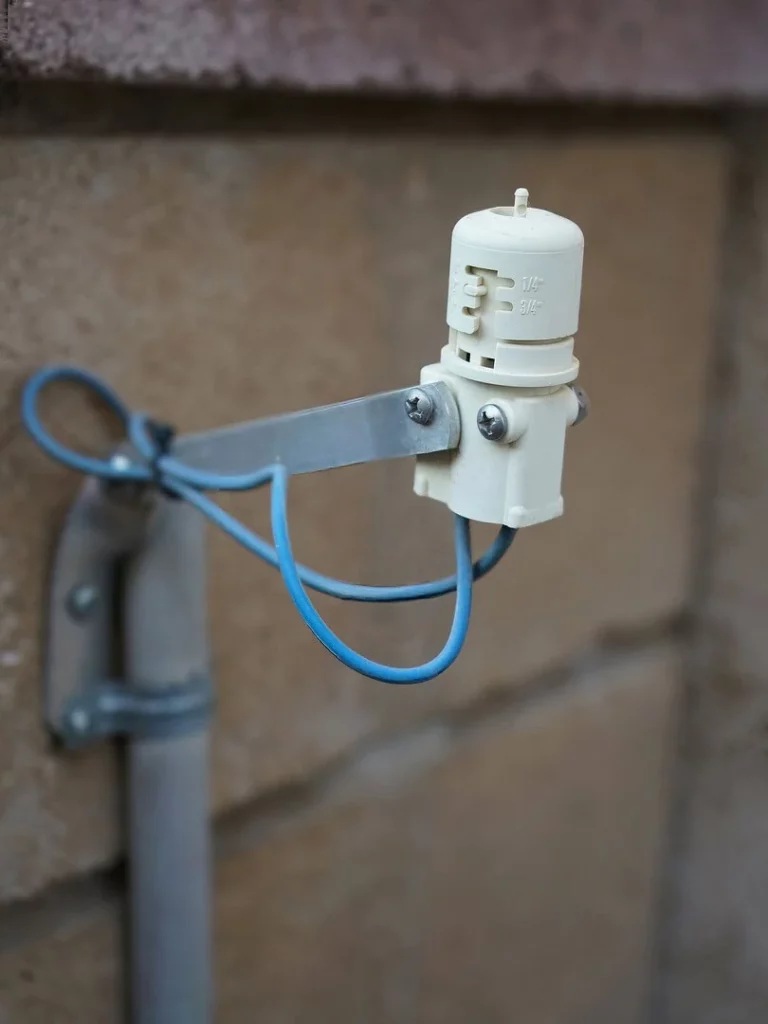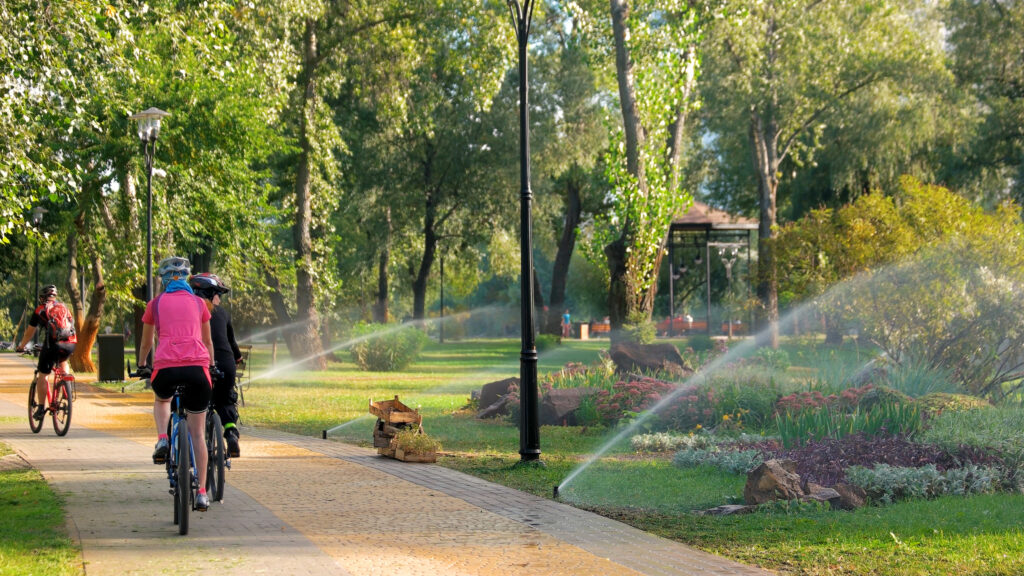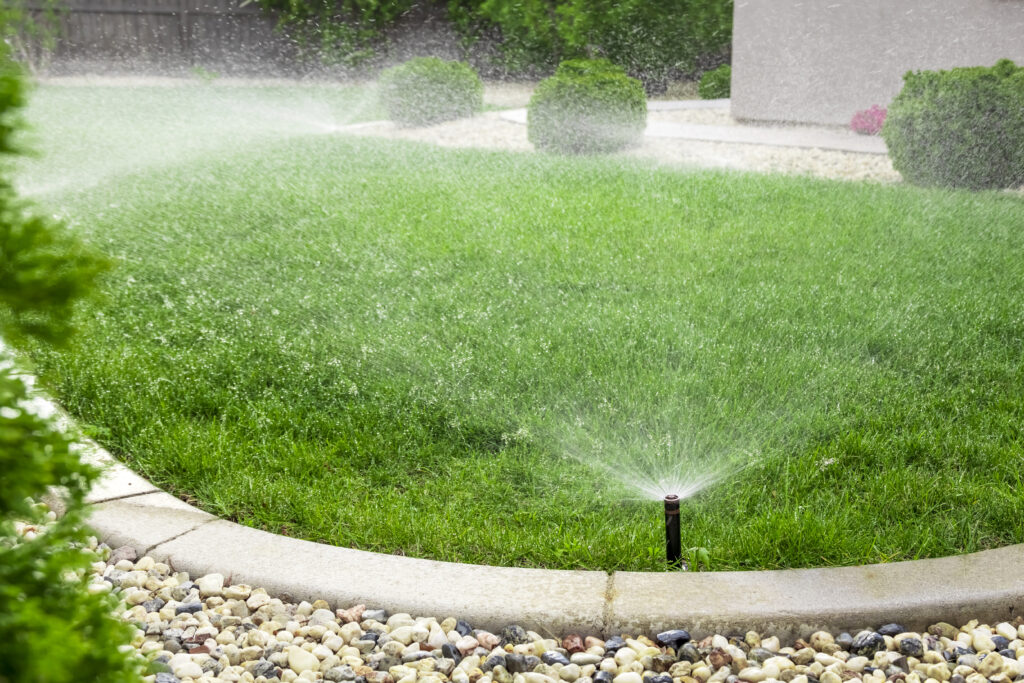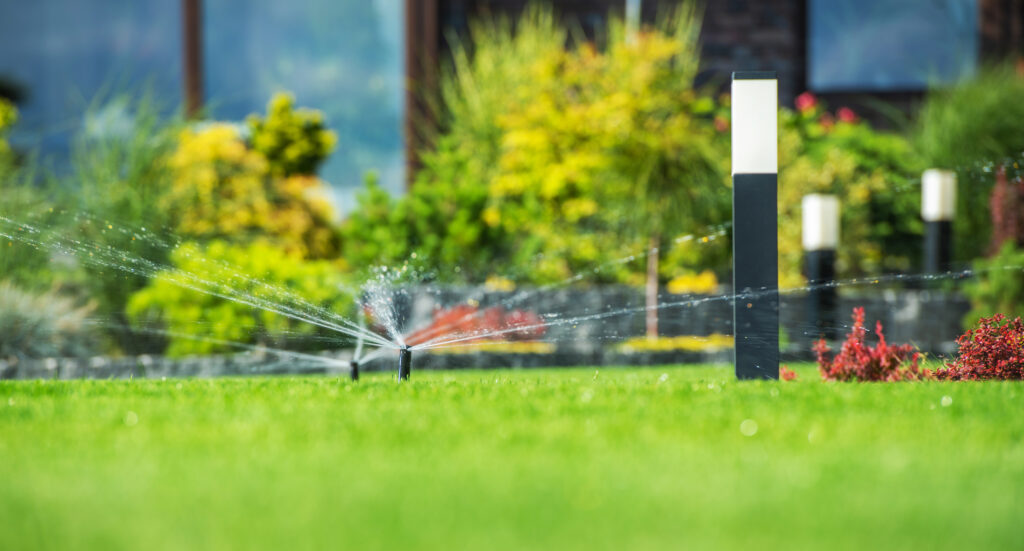Efficient irrigation is not just a matter of convenience; it’s a vital aspect of sustainable landscaping and water conservation. Sprinkler systems play a critical role in maintaining healthy lawns and gardens, but when coupled with a rain sensor, their efficiency is significantly enhanced. Let’s look at the importance of rain sensors and why every sprinkler system should be equipped with one, especially in states like New Jersey where laws mandate irrigation systems have them.
Understanding Rain Sensors
A rain sensor is a small device that automatically adjusts a sprinkler system based on the amount of rainfall. It is designed to shut off your sprinkler system when it detects sufficient moisture, preventing unnecessary watering. These devices use hygroscopic discs that swell in the presence of rain to trigger a switch that pauses the sprinkler operation. Once the discs dry out, the system resumes normal operation, ensuring that your garden is watered only when necessary.
Benefits of Installing a Rain Sensor
Installing a rain sensor offers numerous benefits:
- Water Conservation: By stopping the sprinkler system during and after adequate rainfall, rain sensors significantly reduce water wastage. This is crucial for environmental conservation and adhering to local water usage regulations.
- Cost Savings: Reducing water usage lowers your water bills, making rain sensors a cost-effective investment in the long run.
- Protection of Landscaping: Overwatering can damage plants and soil structure. Rain sensors maintain optimal moisture levels, enhancing the health and beauty of your landscape.
Current Rain Sensor Laws in New Jersey
Recent legislation mandates the installation of rain sensors for new sprinkler systems. These laws aim to reduce over-irrigation, a significant source of water waste. Homeowners and businesses must ensure their irrigation systems comply with these regulations to avoid penalties and contribute to statewide water conservation efforts.
Common Misconceptions about Rain Sensors
Despite their benefits, some misconceptions persist about rain sensors:
- Inaccuracy: One concern is that rain sensors might mistakenly activate, causing the sprinkler system to shut off even when it’s not raining enough to warrant it. However, modern rain sensors are equipped with advanced technology that allows them to accurately measure precipitation. These devices can be calibrated to react to specific amounts of rainfall, ensuring they only activate when there is sufficient water to meet the needs of your lawn and garden. Many models also feature adjustable settings to cater to different climate conditions, ensuring reliability whether in a drizzle or a heavy downpour.
- Complexity: Another myth is that rain sensors are complicated to install and maintain. On the contrary, rain sensors are designed for user-friendliness and ease of integration with existing sprinkler systems. Most models come with simple instructions and can be installed in a few easy steps—usually involving mounting the sensor in an appropriate location and connecting it to the sprinkler control box. As for maintenance, it generally involves minimal effort such as cleaning the sensor surface occasionally to remove debris and checking the battery in models that require one.
- Unnecessary Expense: The initial cost of a rain sensor might seem like an unnecessary expense to some. However, the investment is quickly offset by the benefits it delivers. Rain sensors prevent overwatering, which conserves water, reducing your monthly water bills. Additionally, by ensuring that your landscape receives the optimal amount of water, rain sensors help maintain the health and aesthetics of your lawn and plants, potentially saving money on landscaping repairs and soil treatments caused by overwatering.

How to Choose the Right Rain Sensor
When selecting a rain sensor, consider the following:
- Compatibility: First and foremost, ensure that the rain sensor you choose is compatible with your current sprinkler system. This involves checking whether the sensor can integrate seamlessly with your system’s control box. Most modern rain sensors are designed to be universally compatible, but confirming this will prevent any issues with system integration.
- Sensitivity: The sensitivity of a rain sensor is critical for its performance. Look for sensors that allow you to adjust their sensitivity settings. This feature lets you customize how much rainfall is needed before the system is paused, ensuring that the watering schedule is perfectly tailored to your specific landscaping needs and local weather conditions.
- Durability: Considering that a rain sensor will be exposed to various weather conditions, choosing a model that is certified for weather resistance is essential. Look for sensors that are built to withstand elements like UV rays, rain, wind, and extreme temperatures to ensure longevity. Durable materials and construction will reduce the need for frequent replacements and ensure reliable performance year-round.
Installation and Maintenance
Installing a rain sensor is straightforward, and maintaining one does not require extensive effort. Here’s how to install and maintain a rain sensor to ensure it operates effectively:
Installation
- Mount the Sensor: The sensor should be placed in an area that is unobstructed by overhangs or foliage to accurately measure rainfall. It’s typically mounted on the eave of a building or a fence post.
- Connect to the Control Box: Integrate the sensor with your sprinkler system by connecting it to the control box. This connection allows the sensor to communicate with the system and control watering based on rainfall.
- Adjust Settings: Based on your regional climate and the specific needs of your landscape, adjust the sensitivity settings of the sensor. This ensures the system activates or deactivates at the right moisture levels.
Maintenance
- Regular Cleaning: Check and clean the sensor periodically to remove debris, leaves, or dirt that might obstruct its rainfall detection capabilities.
- Battery Check: For battery-operated sensors, ensure that the battery is functioning and replace it as necessary to keep the sensor active.
- Recalibration: Depending on your local climate conditions and the performance of the sensor, recalibrate its settings annually to maintain accuracy and efficiency.

Get Smart with Your Watering, Contact Morgans Irrigation
Ready to save water, reduce your bills, and take the guesswork out of watering your landscape? Morgans Irrigation is here to help. With years of experience and a deep commitment to sustainability, we provide custom irrigation systems that include the latest in rain sensor technology.
While you might consider installing it yourself, partnering with our experts guarantees a hassle-free setup and professional maintenance, ensuring your lawn and garden remain lush and vibrant with minimal effort on your part. Contact us today and step into a smarter, more sustainable world of irrigation.
Rain Sensor FAQs
What is a rain sensor?
A rain sensor automatically adjusts your sprinkler system based on the actual rainfall, reducing water waste and saving money.
How does a rain sensor work?
It uses hygroscopic discs that swell when wet to pause your sprinkler system, resuming once the discs dry.
Is it mandatory to install a rain sensor in New Jersey?
Yes, recent laws require new sprinkler systems to include a rain sensor to prevent over-irrigation.
Can I install a rain sensor myself?
While DIY installation is possible, professional installation is recommended to ensure optimal performance and compliance with local regulations.
How often should I check my rain sensor?
It’s best to check your rain sensor at least once a year, ideally before the peak watering season, to ensure it is free from debris and functioning correctly.




